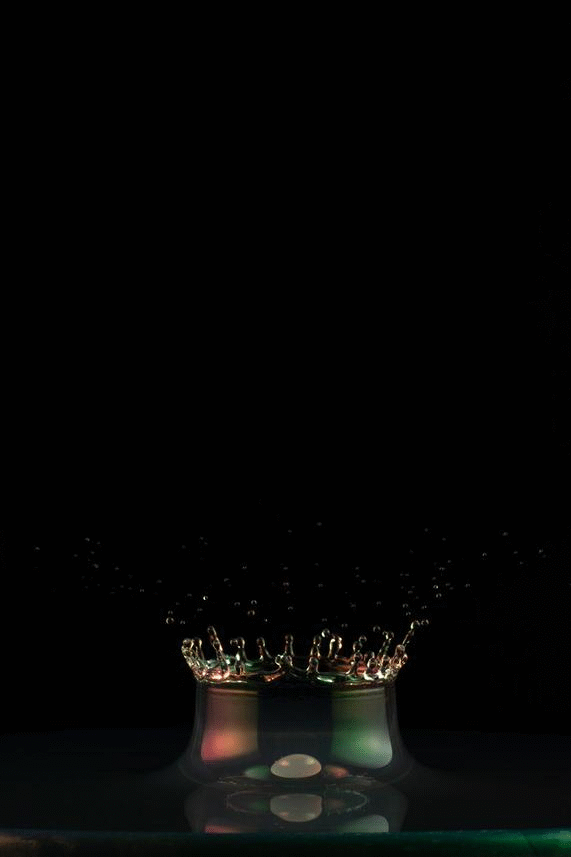
An art & science collaboration with Wlodek Brühl: #dropphotography
If you are here because you saw my title or talk at the Science in Public conference in Manchester and are curious about #dropphotography as a form of art&science collaboration in scicomm — a special welcome to you! If you are here for any other reason — welcome anyway! :-)
One of my favourite pet projects right now is the #scicomm collaboration with the artist Wlodek Brühl.
The idea behing the collaboration is very simple: Wlodek does awesome drop photography like what he showed in his recent exhibition, or the picture below: Drops falling into water, creating sculptures that he captures with digital photography.
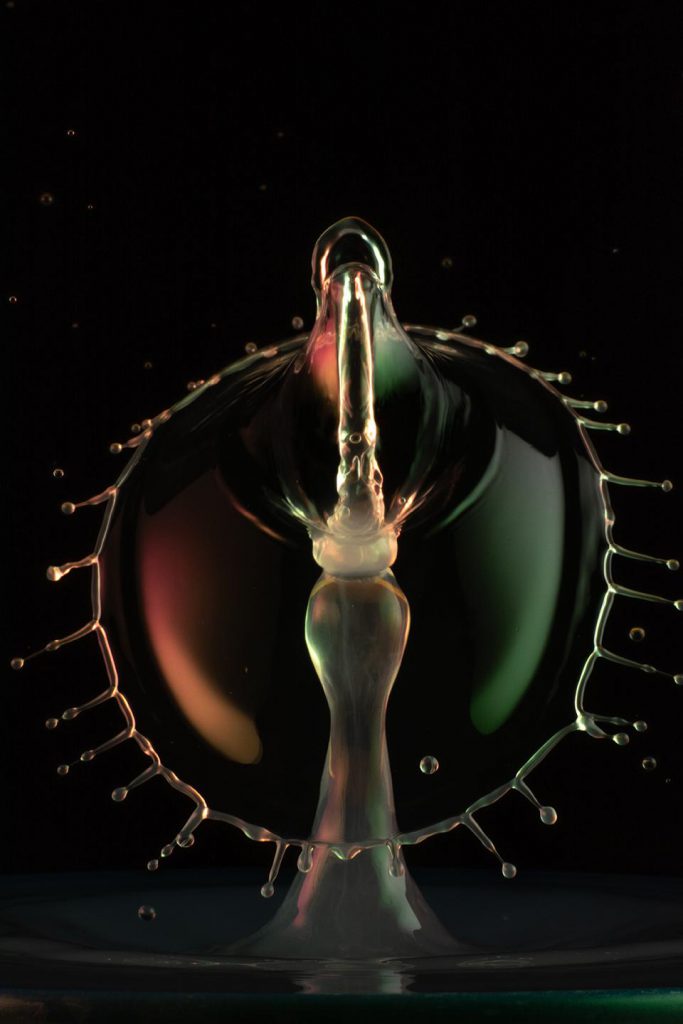
I, on the other hand, use the opportunity of having people fascinated and mesmerised by this art, and curious to learn more about it, to talk about — what else? — physics! :-)
For one example of what that collaboration looks like in practice, check out my speech at the opening of his latest exhibition. We have a workshop coming up this autumn that we will run together, as well as other exciting projects which are, unfortunately, still secret. It’s going to be awesome, though!
But back to physics: Creating the exact sculpture you want requires enormous precision. This is what the setup looks like: Reservoirs above a vessel in which the drops fall. And a complex setup of flashlights and a digital camera, all coordinated by a custom-made piece of software.
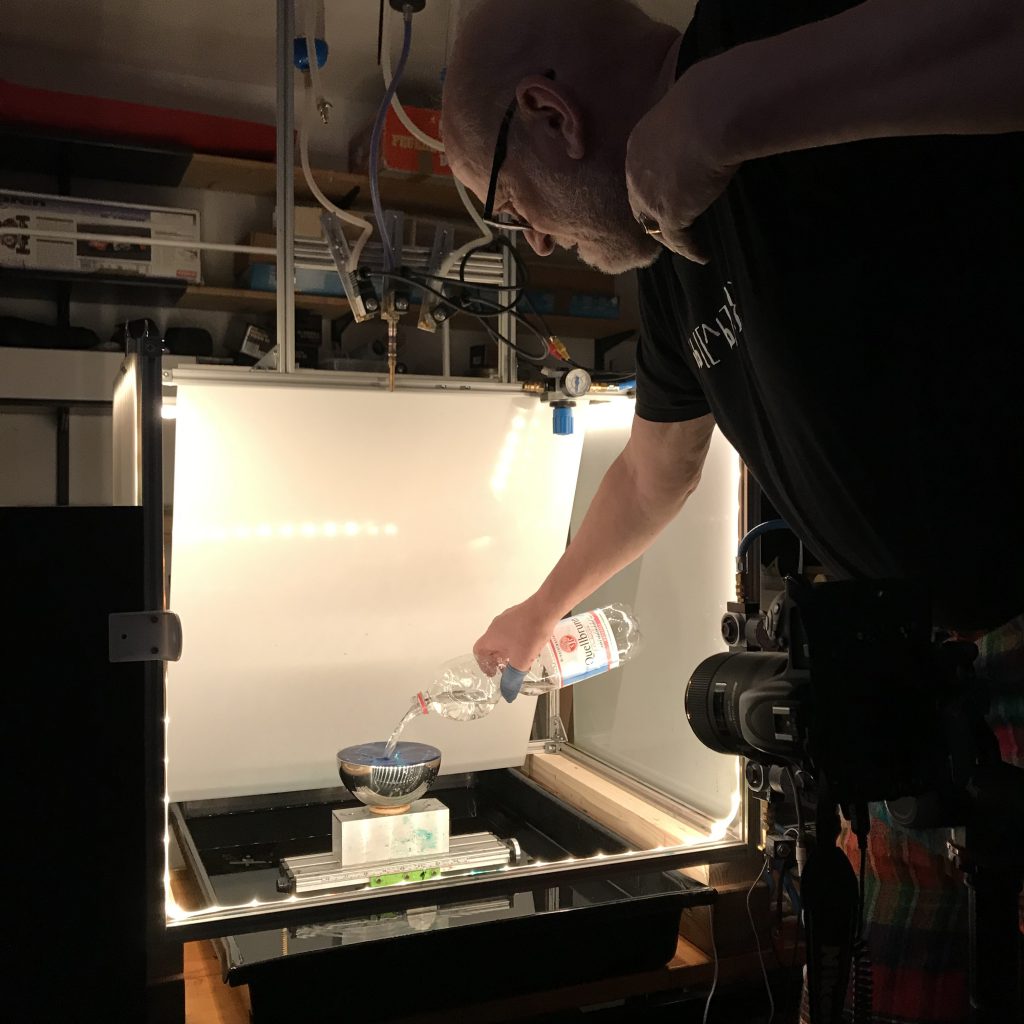
The most important thing influencing the momentum with which a drop hits the water below is the height it falls from. Below, pictures are taking at constant intervals after drop release, yet you see that the for each new picture, the drop fell a little further than it did in the previous interval — it fell a little faster due to acceleration of gravity. Thus the longer you let a drop fall (i.e. the higher the drop falls from), the more it will accelerate, bringing more energy into producing a fountain.
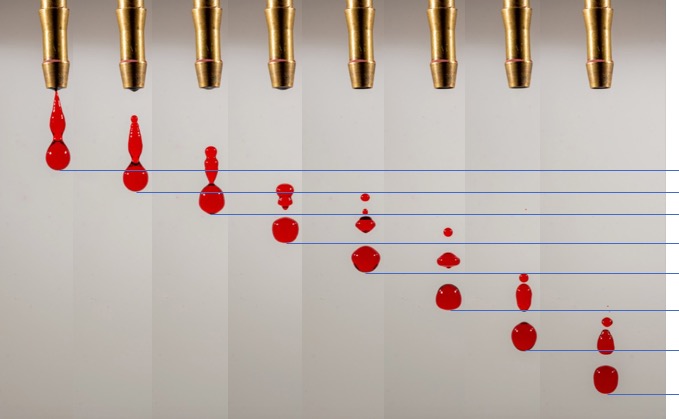
The next thing that needs to be very precisely controlled are the opening times of the valves that release the drops. Not only when they open, but also for how long. Consider opening times of the valves in the picture below, left to right: 50, 55, 60, 70 milliseconds (The series of pictures on the left you know already from the “acceleration of gravity” pic above).
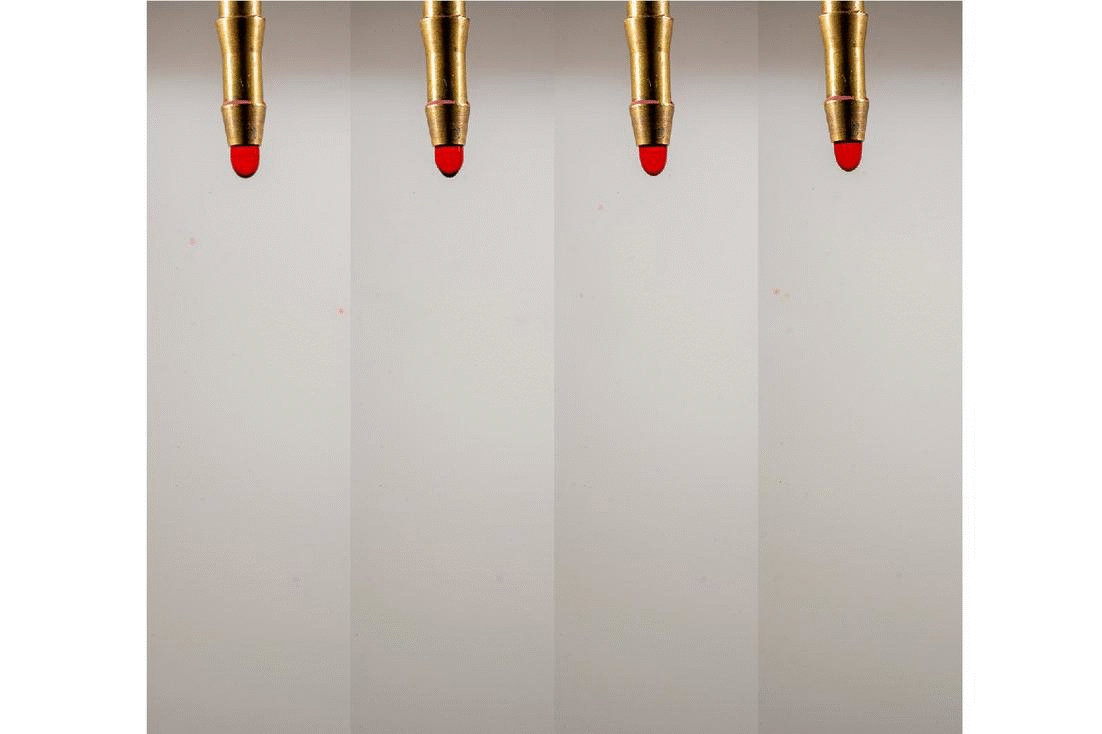
Depending on how long the valve is opened, different volumes of water are released, forming different drops. Easy to imagine that this will lead to different fountains once the drops hit the water below!
So what happens exactly once the drop hits water? The water surface gets deformed as the drop pulls it downwards. Due to surface tension, it then bounces back up, bringing up a column of water, that then collapses back down. And all these disturbances radiate ripples away from the original point of impact — capillary waves! (Capillary waves are super interesting because they behave very differently from “normal” gravity waves, but that’s a topic for a different post!)

But so that’s how fascinating it is to watch just one drop falling into water. Now imagine several drops falling one after the other, such that a second or third drop hits the column rising up after the first drop already hit the surface? That’s what makes these interesting umbrella shapes:

As you can imagine, there are tons of parameters you could vary now. Not only fall height and drop size, time lag between drops, number of drops that fall, but also viscosity of the fluid, shape of the bowl the drops fall into, all kinds of things. And that’s only using the easiest setup! You could also imagine using several valves, or air pressure to shoot drops with more momentum, or even have water shooting up from below (all of which Wlodek has done!).
And then, of course, depending on when exactly you choose to take a picture of the sculpture, you will see it in very different stages of formation and decay. You see the attempt of surface tension to minimise disturbances, instabilities that still form along the rim of the umbrellas which ultimately burst into many different small droplets…
Do you see the potential to talk about physics pretty much forever here? I love it! :-)
What #wavewatching means to me. My presentation at #sipmanc | Dr. Mirjam S. Glessmer says:
[…] just check out the hashtags on twitter; I put up posts on my blog (on #kitchenoceanography and #dropphotography). Or come and talk to me, or shoot me a […]